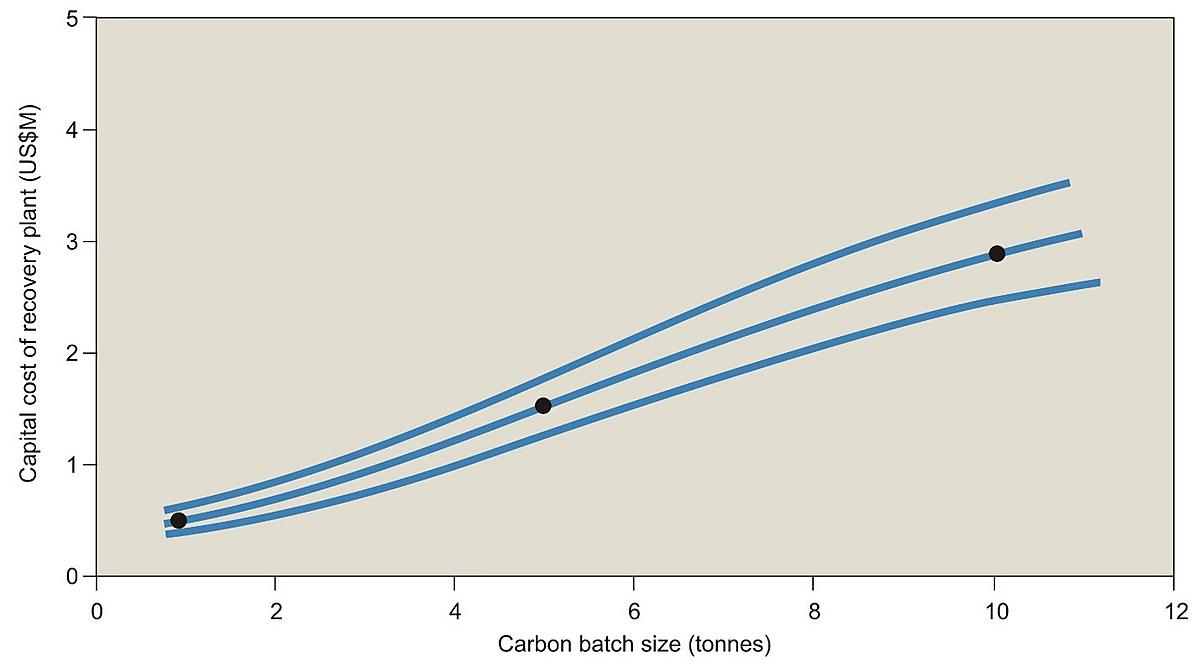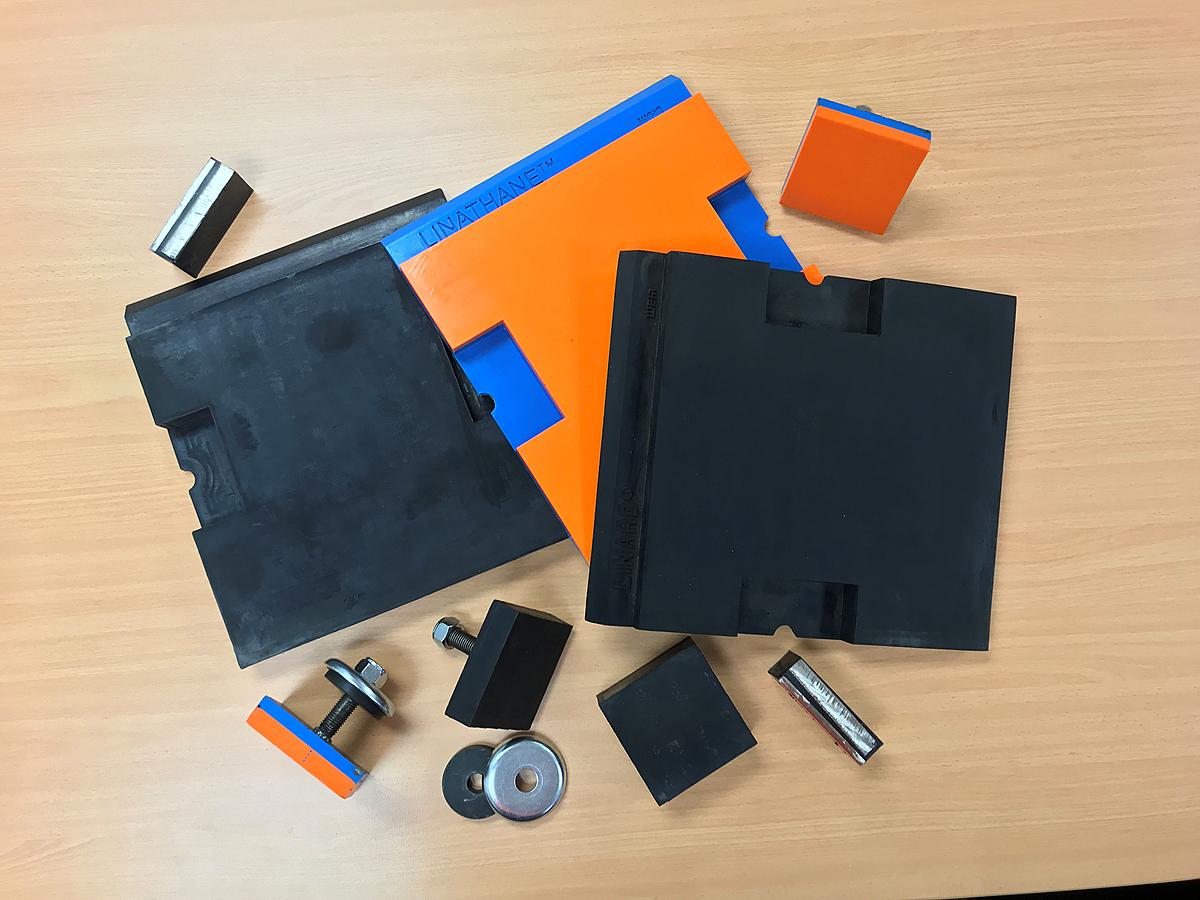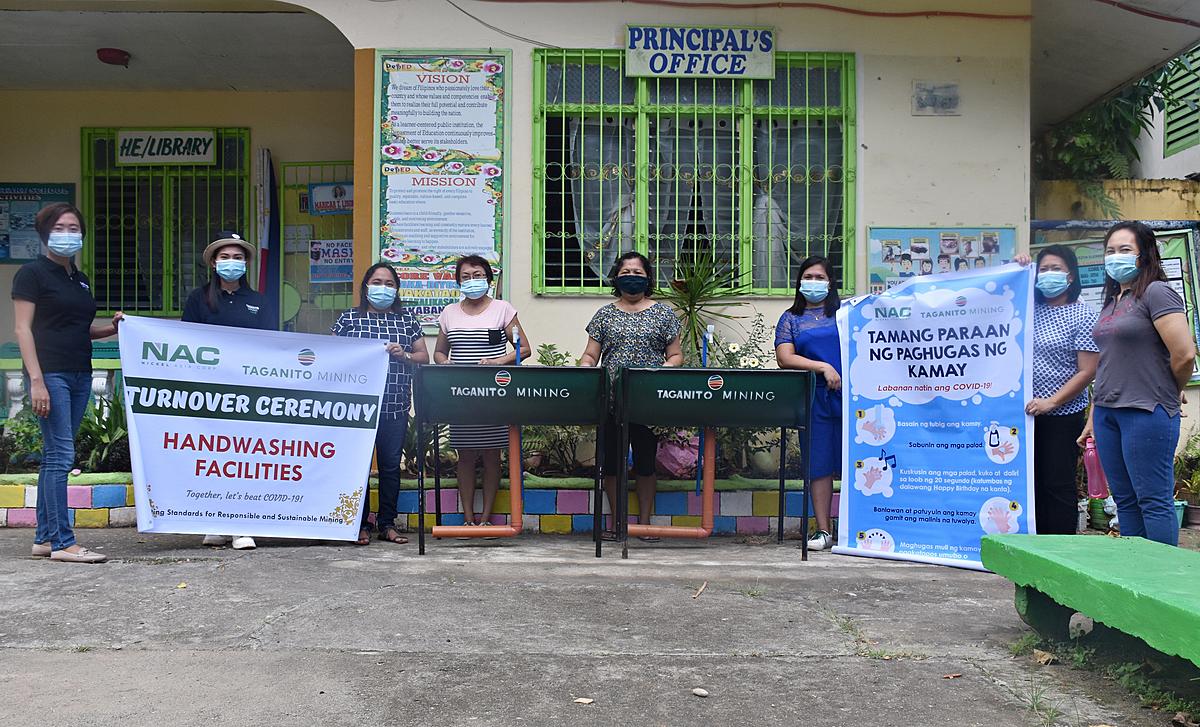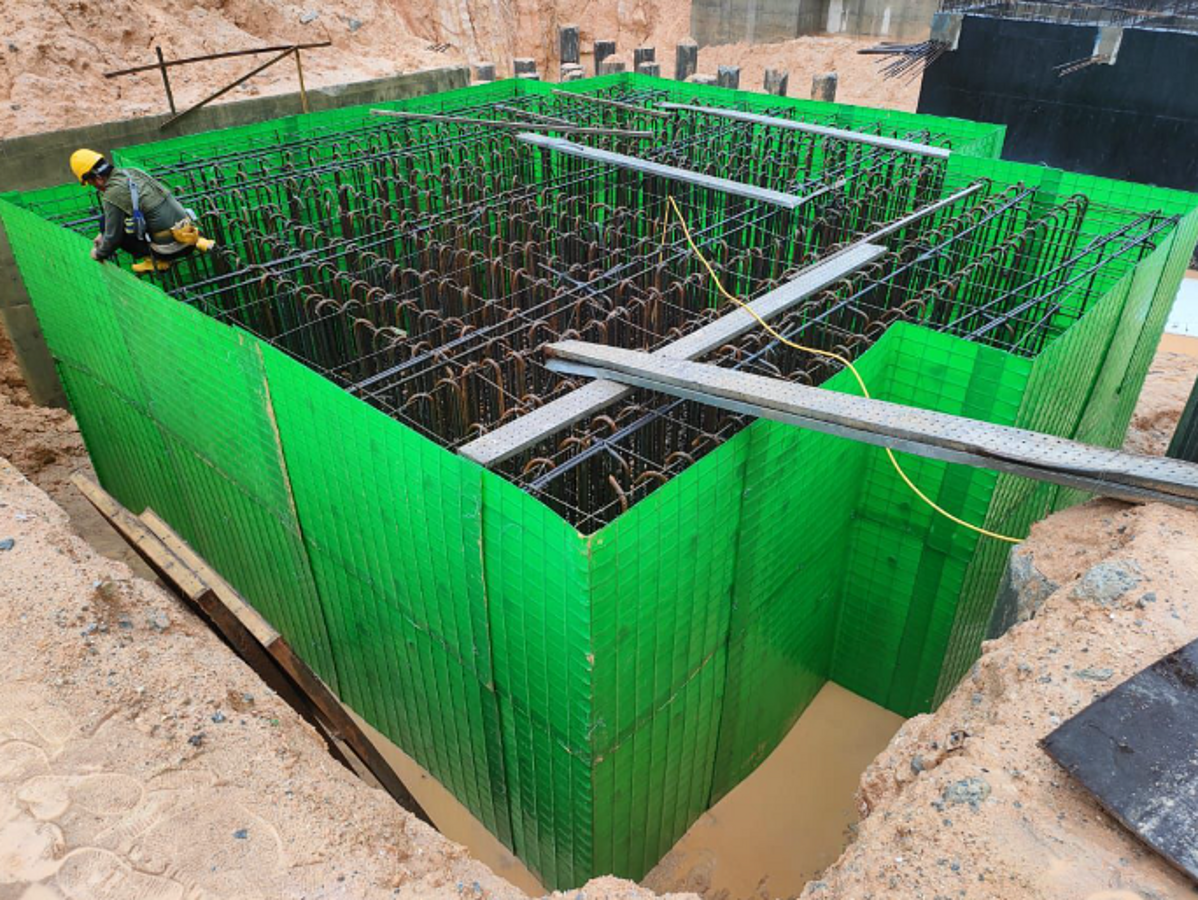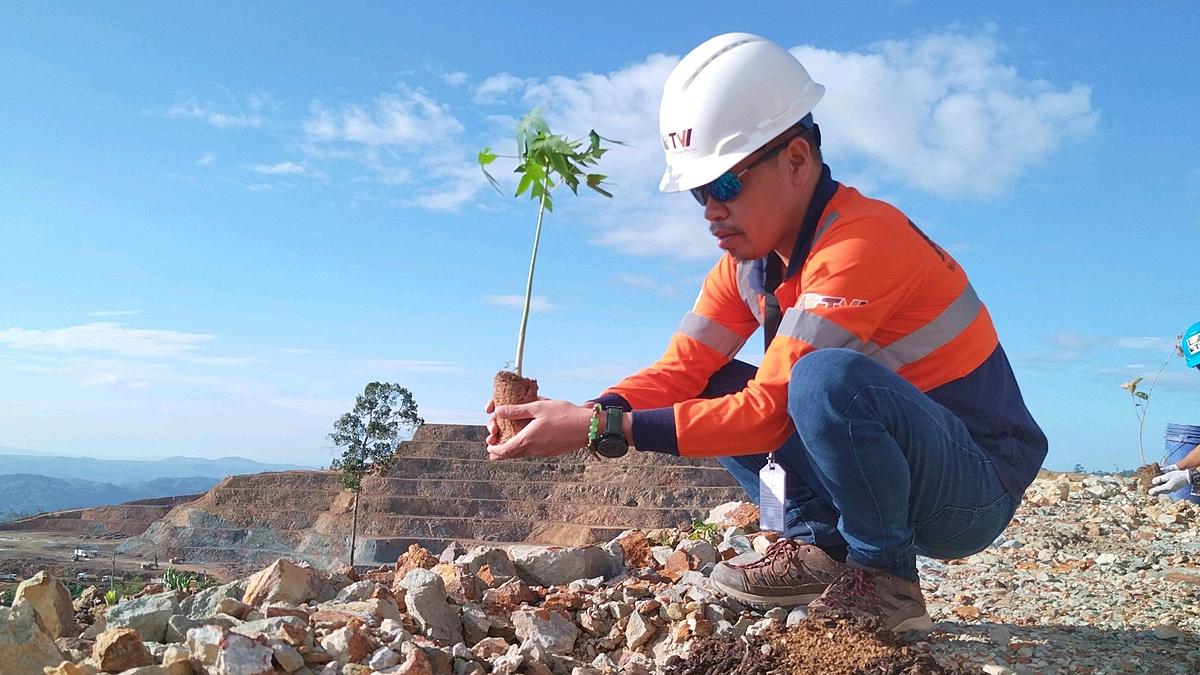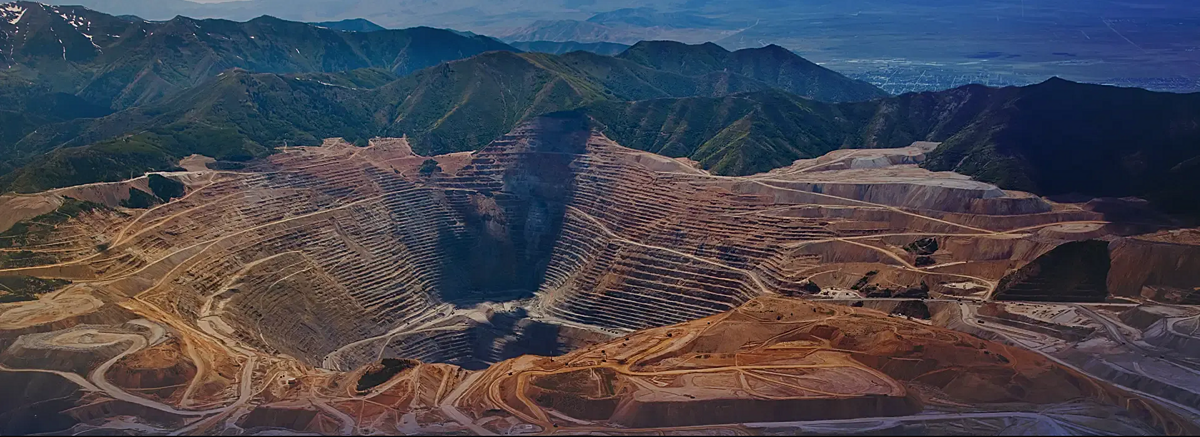Whenever flowsheets are considered for treatment of silver ores, the conventional approach is in favor of a Merrill-Crowe processing circuit rather than CIL/CIP. This is understandable when the historical development of CIP is considered. What has been disregarded is the fact that for the last 30 years there have been ClP plants successfully treating ore with high silver/gold ratios. The paper presented addresses the continuing debate on the use of carbon for silver recovery and seeks to explain the origin of the Silver Coconut 'myth'.
Since many major gold projects contain large amounts of silver, this discussion is of particular interest to the region.
During the 1970’s and 1980's significant advances in gold processing technology centered around CIP. Many of these developments occurred almost in isolation on three different continents. Cross-pollination of ideas was slow despite the excellent work done by international conferences.
Prior to the commercial application of CIP both North America and South Africa had well proven Merrill-Crowe processes for most gold operations. CIP was initially developed in North America but further refined in South Africa where it became the major process for gold recovery.
Its popularity quickly grew internationally, in particular for the treatment of low grade oxide deposits. The high clay content in many oxide ores proved a challenge for the liquid/solid separation step with Merrill Crowe. Although South Africa made major advances in CIP technology, there was no need to address the treatment of silver ores since South African ores do not contain any significant amount of silver.
Australasia saw the development of several operations having high silver levels designed with CIP circuits. Several of these plants encountered processing problems due to the high silver content. In nearly all cases this was caused by an under-sized elution plant. The operations that were more successful such as the Martha Hill Project in New Zealand were those using the AARL elution system, which is more flexible than other elution systems owing to its ability to treat higher carbon flows. However, the publicity generated by the unsuccessful projects overshadowed the successful ones. The resultant confusion concerning CIP and silver has persisted to the present day.
Flowsheet Options
The basic flowsheet choice is between zinc precipitation (Merrill-Crowe) (Figure 1) and carbon adsorption (CIP) (Figure 2). Various hybrid combinations of these two options are also considered as a compromise. A detailed description of the processes is not provided here as this is well described elsewhere. (Ref 1). The hybrid options are worthy of some discussion as they attempt to overcome some of the perceived problems with the two basic flowsheets when applied to high silver ores.
The first hybrid option is to treat thickener overflow by Merrill-Crowe to reduce the grade of solution in the thickener underflow reporting to a subsequent CIP plant. It is believed that this proportionally reduces the carbon treatment rate. In fact, as the solution grade decreases, due to thickener feed dilution so does the carbon loading. Halving the solution grade does not halve the carbon treatment rate. Gold and Silver loading onto carbon is an equilibrium process, therefore, the lower the solution grade, the lower the carbon loading.
The second hybrid option is the replacement of the electrowinning step by zinc precipitation. However, there are hidden cost implications in this route, which are not always considered. Treatment of high silver grade ores usually involves very large masses of recovered metal, up to several hundred times the weight of the gold recovered.
In practice the electrowinning step becomes easier with high silver because a stainless steel wool cathode can be used. The deposited silver/gold slime is simply washed off the wool, filtered, dried and directly smelted with minimum flux usage. New cell designs also allow metal sludge removal without taking the cathode out of the electrowinning cell, thus reducing labour input.
The final flowsheet selection is made through the economic comparison of capital and operating costs for the various options. The factors included in the assessment have previously depended very much on the degree of understanding of the metallurgical process.
The following sections describe the testwork and modelling required to make a comprehensive assessment of the f!owsheet options.
Testwork & Modelling
A comprehensive computer model has been developed to study and optimise the CIP flowsheet. (Ref 2). The model includes the leach, adsorption and elution processes using data generated in specifically designed testwork. Leach and carbon design parameters are derived from the testwork which are fed directly into the process model. Capital and operating information is contained within the model which then allows a full optimisation study to be carried out for the cyanidation and metal recovery areas.
Variables examined are Leach time (number and size of leach tanks); Adsorption stage (number and size of tanks); Degree of integration between CIP and CIL; Carbon concentrations and loadings and Elution plant size.
The specific testwork techniques to derive the appropriate model parameters are now well established. The laboratory scale test equipment has proven scaleup factors which have been successfully demonstrated on numerous plants, with both high and low silver values.
A bulk leach test is first undertaken to produce sufficient sample for the adsorption testwork. The leach curve derived from this test is described by an equation which demonstrates the fast and slow leaching and unleachable components of the ore.
The adsorption testwork examines the carbon kinetics, equilibrium loadings and fouling factors for both gold and silver. The derived data is then used along with the leach parameters to optimise the circuit design.
Gold and silver are examined independently. The silver flowsheet is first optimised as this tends to determine the size of the plant. The gold parameters are then checked to ensure acceptable performance.
The Merrill-Crowe flowsheet is not modelled in the same ways since its' performance is fairly well fixed by a zinc consumption rate and metal recovery percentage. Testwork is carried out to confirm the precipitation parameters and to check for problem elements, such as copper.
Process Selection
The carbon option is often eliminated because of high capital and operating costs. Two major misconceptions have significant effects on the final costings and therefore the final flowsheet selection. These refer to carbon loadings and plant sizing.
Carbon Loading
The size of the elution plant is determined by the silver loading assumed for the loaded carbon. For conservative reasons, design silver loadings on carbon have traditionally been kept below 7500g/t, whereas in practice levels of two or three times that are achieved. If higher loadings are used for design, then the plant size can be proportionally reduced, thus reducing the plant and operating costs.
Plant Sizing
The capital and operating costs for the recovery plant are made up of a contribution from several areas: Acid wash, Elution, Electro-winning, Smelting and Regeneration.
Traditionally it has been the practice to size each individual area to match the carbon elution rate. This, however, is not logical since different factors affect different areas, especially when related to high metal values.
Acid Washing removes inorganic fouling of the carbon. The level of fouling decreases as the turnaround time increases at the higher carbon treatment rates. In many cases the inorganic fouling is minimal and the requirement for acid treatment of the carbon is reduced to as low as 20 per cent of the overall elution rate.
Elution. The old debate of Zadra versus AARL is hopefully over. The use of Zadra systems was a significant contributor to the negative view of using carbon for silver recovery. The AARL elution process has the advantage of a short elution time (3 hours) compared with the 12-24 hours for Zadra. Clearly the AARL can easily accommodate much higher treatment rates with a smaller column compared to Zadra. Further advances, such as the split elution, have significantly reduced operating costs, thereby making the carbon route more competitive for silver recovery.
Electrowinning. This has always been labour intensive and any increase in the size of the electrowinning plant was not favored, especially the size of plant required for high silver recovery. In practice, however, the high silver level actually becomes an advantage as it produces a non-coherent deposit that can simply be washed off the stainless-steel wool, filtered, dried and smelted. The usual problems of acid treating steel wool or calcining large quantities of iron are overcome.
Modern electro-winning plant designs incorporate low cost, single pass, high efficiency cells with in-situ cleaning. The new designs are no longer labour intensive.
Smelting. The use of stainless-steel cathodes to produce a silver/gold slime results in far less flux requirement and therefore reduced metal loss. The smelting furnace size is also reduced because of the smaller volumetric requirements. The bullion product gives a high quality silver/gold bar.
Regeneration. It is generally assumed that carbon regeneration is a high capital and operating cost area of the carbon plant. Again, no cognisance has been taken of the process fundamentals of this step. Comparative cost estimates are frequently made on the basis of regeneration of 100 percent of eluted carbon. What is so often forgotten is that the organic fouling is more a function of ore treatment rate and not the contained metal values. Typically, a 1mtpa gold plant would treat 1000tpa of carbon. If silver were present, say at 50g/t (soluble), then the carbon treatment rate through elution would increase to say, 3000tpa ie three times.
However, the carbon regeneration capacity could stay close to the original 1000tpa because this is tied to the ore treatment rate, not the silver levels, with some minor adjustment because of a slightly higher carbon inventory.
Cost Considerations
The economic model takes into account the various factors considered above to give more realistic values to the capital and operating costs for the carbon circuit. In a conventional gold plant, the process selected is usually CIP for reasons of lower capital and operating costs and reduced soluble losses. Additional advantages apply when treating ores with difficult liquid:solid separation steps. eg. Clays. When treating ores with high silver content a substantial increase in the size of the carbon plant is usually predicted by some designers.
This results in a substantial increase in capital and operating costs which can reverse the economic advantages of the CIP flowsheet. Other concerns are the displacement of gold by silver on the carbon, causing soluble gold losses and poor silver adsorption kinetics. In well designed plants these factors are not material.
Capital Costs
For a gold ore, the size of the carbon circuit increases more or less proportionally to the ore treatment rate, not the metal grade. A plant treating 1mtpa of ore would typically treat 1000tpa of carbon through the acid wash, elution and regeneration stages. The indicative capital cost relationship for varying plant sizes is shown graphically in Figure 3. The range of capital costs for a particular size are indicated to reflect differing project-specific detail requirements such as for various climatic conditions.
The treatment of a high silver gold ore results in an increase in the size of the carbon circuit when compared to a 'gold' plant with the same ore treatment rate. This is due to the lower loading ratio of silver compared to gold.
Using the above example of 1mtpa ore treatment rate the increase in carbon treatment rate with a 30glt soluble silver ore would typically be three times that of the gold ore i.e. 3000tpa. However, it is not the total recovery plant that increases in proportion, only the elution stage increases to this level. As previously noted, the acid wash and regeneration stages do not require to be matched to the elution rate. The capital cost therefore increases by only 60 per cent instead of doubling, as might perhaps be expected from simple application of the relative cost data given in Figure 3.
Operating Costs
The differences which apply to operating costs are more significant than those for capital costs and benefit the CIP treatment route for high silver ore. Figure 4 and Figure 5 illustrate the operating cost distribution for the two cases of treating gold ore and high silver ore at the same ore treatment rate. These results translate to 60 per cent increase in the annual operating cost for the high silver ore recovery plant instead of a pro-rata 200 per cent increase. This obviously has a major influence on any cost comparison study.
There are many other factors that need to be considered when undertaking a comparative study of two processes and this paper does not address what are often case-specific factors. The intention is simply to point out some additional major factors that should be addressed when designing plants for high silver ores.
Conclusions
The above assessment does not give a specific comparison of Merrill-Crowe versus CIP but instead indicates the fundamental considerations when assessing the applicability of a carbon system for the treatment of high silver ores.
Testwork must be specifically designed to measure the carbon parameters for silver.
Each process area for the carbon plant should be assessed separately and not simply matched to the elution rate.
The latest process system should be included, such as the AARL elution system and in·situ cleaning, high efficiency electrowinning cells.
There is no limiting silver/gold ratio that naturally precludes the use of carbon, and many more high silver ore projects would select the carbon route if the methods described above are given due consideration in the technical and economic evaluations.
By carrying out appropriate testwork and using a proven modelling technique it can be demonstrated that CIP is more often a preferable option for high silver ores than Merrill-Crowe.
GreenGold have recently been involved in the conversion of a hybrid Merrill-Crowe plant to a full CIL circuit simply with the addition of electro-winning capacity. Silver grades for this plant range up to 150g/t.
References
1. S.A.I.M.M. monograph series M.T. The Extractive Metallurgy of Gold in South Africa. Editor G.G. Stanley: 1987.
2. Menne D.M., Predicting and assessing Carbon-in-Pulp circuit performance: XIV International Mineral Processing Conference, 1982.

